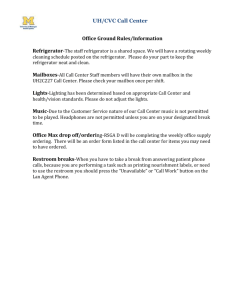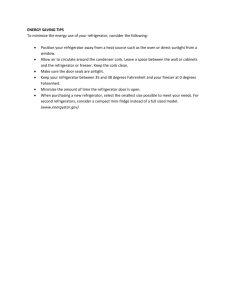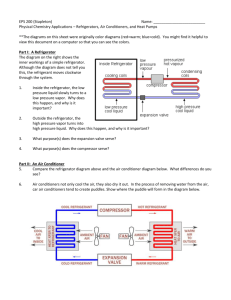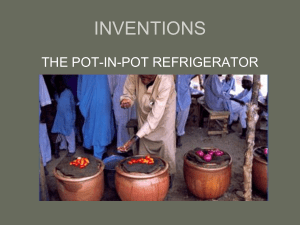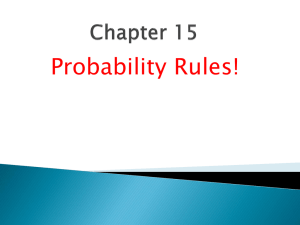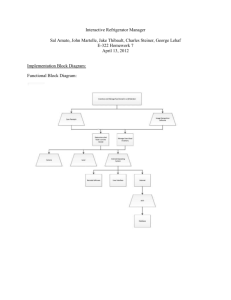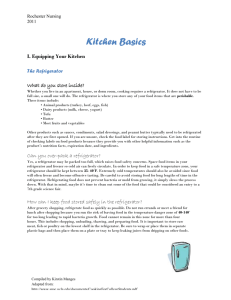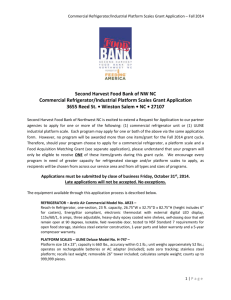Show that for the max. work to be done per kg of air in Otto cycle
advertisement
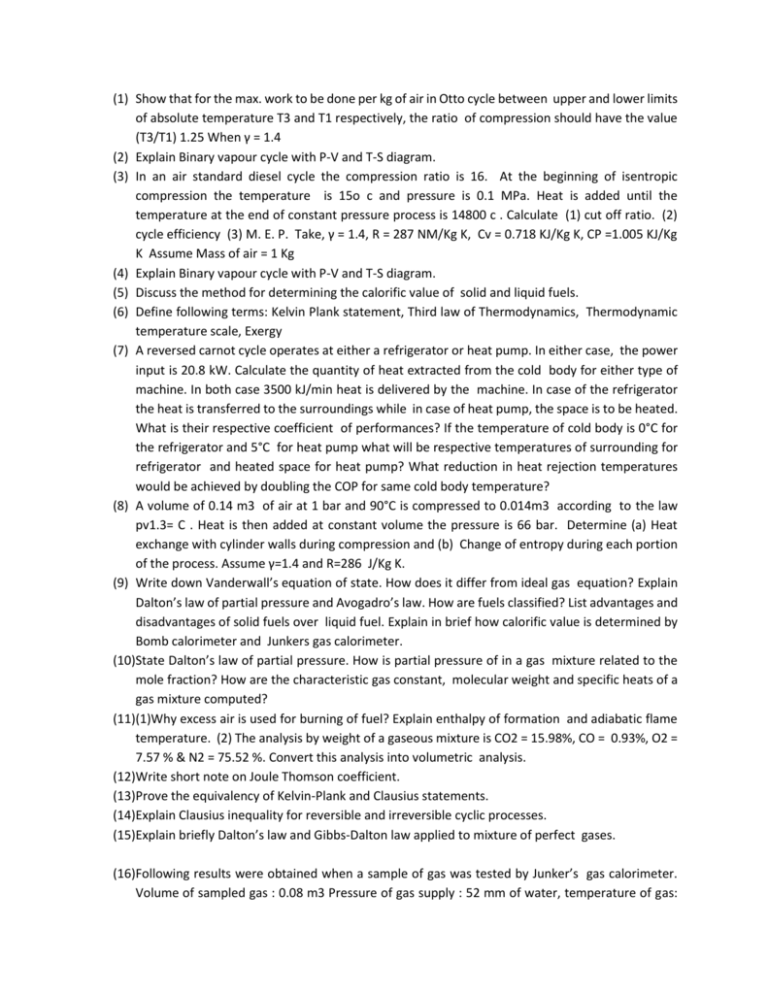
(1) Show that for the max. work to be done per kg of air in Otto cycle between upper and lower limits of absolute temperature T3 and T1 respectively, the ratio of compression should have the value (T3/T1) 1.25 When γ = 1.4 (2) Explain Binary vapour cycle with P-V and T-S diagram. (3) In an air standard diesel cycle the compression ratio is 16. At the beginning of isentropic compression the temperature is 15o c and pressure is 0.1 MPa. Heat is added until the temperature at the end of constant pressure process is 14800 c . Calculate (1) cut off ratio. (2) cycle efficiency (3) M. E. P. Take, γ = 1.4, R = 287 NM/Kg K, Cv = 0.718 KJ/Kg K, CP =1.005 KJ/Kg K Assume Mass of air = 1 Kg (4) Explain Binary vapour cycle with P-V and T-S diagram. (5) Discuss the method for determining the calorific value of solid and liquid fuels. (6) Define following terms: Kelvin Plank statement, Third law of Thermodynamics, Thermodynamic temperature scale, Exergy (7) A reversed carnot cycle operates at either a refrigerator or heat pump. In either case, the power input is 20.8 kW. Calculate the quantity of heat extracted from the cold body for either type of machine. In both case 3500 kJ/min heat is delivered by the machine. In case of the refrigerator the heat is transferred to the surroundings while in case of heat pump, the space is to be heated. What is their respective coefficient of performances? If the temperature of cold body is 0°C for the refrigerator and 5°C for heat pump what will be respective temperatures of surrounding for refrigerator and heated space for heat pump? What reduction in heat rejection temperatures would be achieved by doubling the COP for same cold body temperature? (8) A volume of 0.14 m3 of air at 1 bar and 90°C is compressed to 0.014m3 according to the law pv1.3= C . Heat is then added at constant volume the pressure is 66 bar. Determine (a) Heat exchange with cylinder walls during compression and (b) Change of entropy during each portion of the process. Assume γ=1.4 and R=286 J/Kg K. (9) Write down Vanderwall’s equation of state. How does it differ from ideal gas equation? Explain Dalton’s law of partial pressure and Avogadro’s law. How are fuels classified? List advantages and disadvantages of solid fuels over liquid fuel. Explain in brief how calorific value is determined by Bomb calorimeter and Junkers gas calorimeter. (10)State Dalton’s law of partial pressure. How is partial pressure of in a gas mixture related to the mole fraction? How are the characteristic gas constant, molecular weight and specific heats of a gas mixture computed? (11)(1)Why excess air is used for burning of fuel? Explain enthalpy of formation and adiabatic flame temperature. (2) The analysis by weight of a gaseous mixture is CO2 = 15.98%, CO = 0.93%, O2 = 7.57 % & N2 = 75.52 %. Convert this analysis into volumetric analysis. (12)Write short note on Joule Thomson coefficient. (13)Prove the equivalency of Kelvin-Plank and Clausius statements. (14)Explain Clausius inequality for reversible and irreversible cyclic processes. (15)Explain briefly Dalton’s law and Gibbs-Dalton law applied to mixture of perfect gases. (16)Following results were obtained when a sample of gas was tested by Junker’s gas calorimeter. Volume of sampled gas : 0.08 m3 Pressure of gas supply : 52 mm of water, temperature of gas: 120 C Barometric pressure : 750 mm of Hg Weight of water heated by gas : 30 kg Temperature difference of circulated water: 150 C Steam condensate collected : 0.06 kg Determine the higher and lower calorific value per m 3 of gas at temperature of 150 C and barometric pressure of 760 mm of Hg. (17)Explain the following: Maxwell’s equation, Helm-holtz and Gibbs function, Joule-Thomson coefficient. (18)A reversible heat engine operates between two reservoirs at 600°C and 40°C. The engine drives a reversible refrigerator which operates between the same 40°C reservoir and reservoir at -18°C. The heat transfer at heat engine is 2100 kJ and there is a net work output of 370 kJ from the combined plant. Evaluate the heat transfer to refrigerator and net heat transfer to 40 °C reservoir. (19)Explain effect on Bryton cycle of intercooling,regeneration and reheating process. (20)Explain energy a property of the system. (21)Explain throttling process and bottle filling process.
